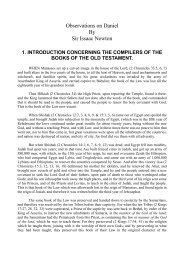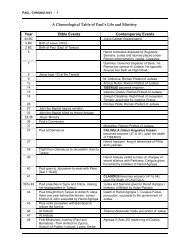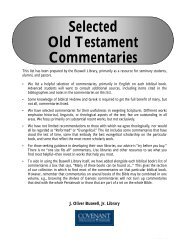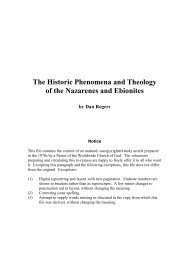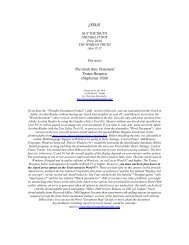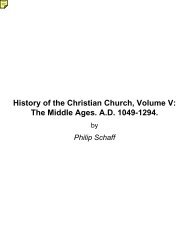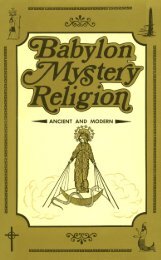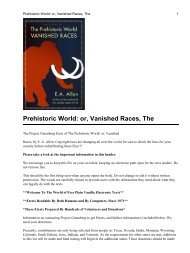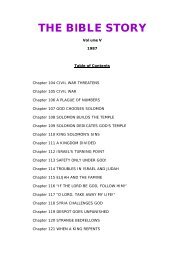Beast of Revelation.pdf - Friends of the Sabbath Australia
Beast of Revelation.pdf - Friends of the Sabbath Australia
Beast of Revelation.pdf - Friends of the Sabbath Australia
You also want an ePaper? Increase the reach of your titles
YUMPU automatically turns print PDFs into web optimized ePapers that Google loves.
Chapter 4<br />
Theodosius. Then she is pictured riding its “seven heads”—<strong>the</strong><br />
Roman revivals beginning with Justinian. These seven heads or<br />
kingdoms (cf. Rev. 17:10) correspond to <strong>the</strong> last seven <strong>of</strong> <strong>the</strong> ten<br />
horns <strong>of</strong> Daniel 7 and <strong>Revelation</strong> 13, following <strong>the</strong> three uprooted<br />
by Catholic sanction. Let’s now examine <strong>the</strong> o<strong>the</strong>r “heads”<br />
that followed Justinian—<strong>the</strong> heads <strong>of</strong> <strong>the</strong> “Holy” Roman Empire.<br />
The Holy Roman Empire<br />
In <strong>the</strong> years following Justinian’s Imperial Restoration, <strong>the</strong><br />
Eastern emperors generally focused <strong>the</strong>ir attention and resources<br />
closer to home. The security provided for <strong>the</strong> West by Constantinople<br />
became negligible. Meanwhile, <strong>the</strong> Carolingian dynasty, which ruled<br />
over <strong>the</strong> Franks (in modern France), was emerging as <strong>the</strong> protector <strong>of</strong><br />
Western Christendom. To secure this role, private negotiations were<br />
held between Carolingian King Charlemagne and Pope Leo III—<strong>the</strong><br />
results <strong>of</strong> which were made manifest in A.D. 800.<br />
“On Christmas Day, as Charlemagne, in <strong>the</strong> [mantle] and sandals<br />
<strong>of</strong> a patricius Romanus [Roman noble], knelt before St. Peter’s altar<br />
in prayer, Leo suddenly produced a jeweled crown, and set it upon <strong>the</strong><br />
King’s head. The congregation, perhaps instructed beforehand to act<br />
according to ancient ritual as <strong>the</strong> senatus populusque Romanus [senate<br />
and people <strong>of</strong> Rome] confirming a coronation, thrice cried out:<br />
‘Hail to Charles <strong>the</strong> Augustus, crowned by God <strong>the</strong> great and peacebringing<br />
Emperor <strong>of</strong> <strong>the</strong> Romans!’<br />
The royal head was anointed with<br />
holy oil, <strong>the</strong> Pope saluted<br />
Charlemagne as Emperor and<br />
Augustus” (Durant, pp. 468–469).<br />
After several years <strong>of</strong> dispute, <strong>the</strong><br />
Byzantine emperor recognized <strong>the</strong><br />
Charlemagne’s<br />
Carolingian Empire<br />
Frankish king as co-emperor. Thus<br />
<strong>the</strong> Imperium in <strong>the</strong> West passed to<br />
<strong>the</strong> second “horn” <strong>of</strong> <strong>the</strong> <strong>Beast</strong> <strong>of</strong><br />
<strong>Revelation</strong> 13 following <strong>the</strong> three uprootings—also <strong>the</strong> second<br />
“head” <strong>of</strong> <strong>the</strong> scarlet <strong>Beast</strong> <strong>of</strong> chapter 17. Both “heads” mentioned so<br />
29



